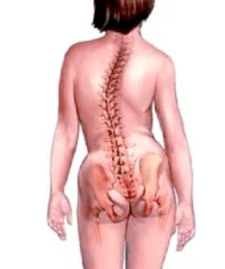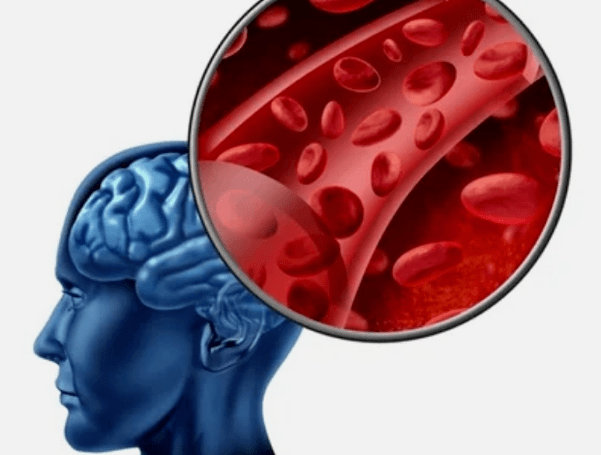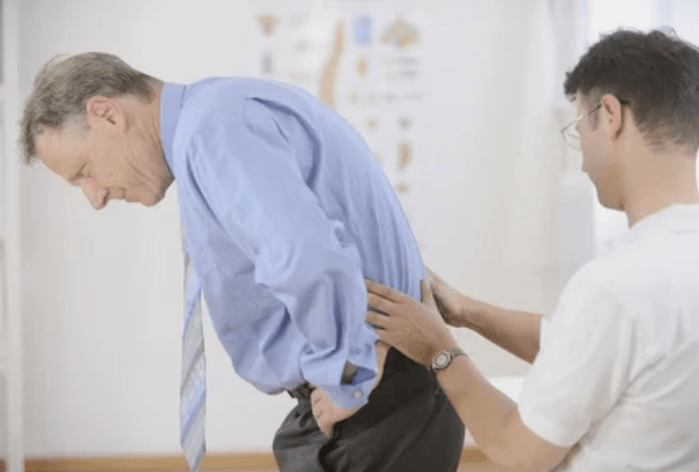Osteochondrosis of the cervix is a serious pathology that is characterized by degenerative-dystrophic changes in the structure of the intervertebral discs. This violation often leads to dangerous complications. Therefore, it is strictly forbidden to ignore it. In order to cope with the disease, you should consult a specialist in good time.

The essence of pathology
Osteochondrosis of the cervical spine is a pathology in which the soft Schwandstein pup is converted into bone tissue. This leads to a clamping of blood vessels and nerve fibers.
The characteristic characteristics of the disease include pain syndrome. It is located in the neck, in the shoulders, in the upper back and in the head. Many patients are confronted with dizziness, pressure fluctuations, nausea and lack of air.
In the area of the cervix region, there is usually remote changes in the area of the cervix region in the middle and older age. This is due to the vertical position of the skeleton and the characteristics of the load distribution.
Doctors find that the disease occurs earlier in men. This happens after 45-50 years. Women look like the manifestations of cervical osteochondrosis later at the age of 50 to 55.
Reasons
A large number of factors lead to the development of this form of the disease. The main causes of cervical osteochondrosis include the following:
- Inadequate physical activity. People who lead an inactive lifestyle have exhausted the muscles of the back that support the spine. The deposition of salts that occur due to lactic acid can make this state worse. The weakened spine is easy to deform and becomes less mobile.
- Obesity. The appearance of overweight is a great danger to the musculoskeletal system. In addition to increased loads on the spine, fat tissue occupy the useful substances that are necessary to maintain the muscle tone and cartilage.
- Long stay in a motionless position. This disease often occurs in drivers and people who work intellectually. After a long stay in a suppressed state, the cartilage gradually lose elasticity. Over time, the intermediate discs acquire an unnatural configuration.
- Nutritional disorders. In order for the body to work correctly, proteins, fats, minerals and vitamins should be available in sufficient quantities in diet. An irrational nutrition provokes a violation of the structure of tissues and leads to its rapid destruction.
- Back damage. This can lead to a pressure distribution to the cartilage, which causes a change in its structure and shape.
- Pathology of the musculoskeletal system. This category includes scoliosis, rheumatism, bone tuberculosis.
The cervical osteochondrosis is often the result of an inherited tendency. In this case, pathology develops without the influence of significant factors.
In order to prevent the appearance of the disease, you must start with the therapy in good time.

Disease stages
There are several phases of pathology, each of which is characterized by certain characteristics:
- The first - the key feature of the state is the instability of the spine. It manifests itself in the initial lesions of the intervertebral discs;
- The second - the main manifestation is the lead. This condition is characterized by a decrease in the cracks between the vertebrae, a gradual violation of the integrity of the fibrous ring. There is often pain caused by compression of the nerves.
- The third - at that time the fibrous ring is completely destroyed. This includes the appearance of Schwanderhernie. This condition is characterized by serious damage to the spine;
- The fourth is the most difficult. At this point, acute pain occurs with every movement. Sometimes the disease improves, but this shows the appearance of bone structures that connect the vertebrae. This leads to a reduction in motor activity and disability.
Symptoms
This form of osteochondrosis is characterized by special manifestations. This is due to the narrow position of the cervical vertebrae and the low height of the windows. Even small changes produce serious manifestations. In addition, this form of osteochondrosis is often accompanied by the compression of cerebrospinal roots.
The symptoms of cervical osteochondrosis include the following:
- Pain. They are localized in different areas - in the back of the head, neck, shoulder girdle, hands. Discomfort in your hands or shoulder girdle is due to the nerves to be clamped. Pain syndrome in the occipital zone is associated with cramps of the muscle tissue of the neck and circulatory disorders.
- Weakness in the hands. This sign is based on damage to the motor nerves, which are responsible for the innp.
- Weakening of sensitivity in the hands. This feature is due to damage to the roots that contain sensitive fibers that are responsible for the innervation of the skin of the hands.
- Reduction of the motor activity of the neck, the appearance of crunch. Such symptoms of an osteochondose of the cervical spine become the result of a decrease in the height of the discs. They are also defeated by the band fire connections and the formation of bone growth on the vertebrae.
- Weakness, loss of coordination of movements and dizziness. These manifestations are due to the damage to the vertebral artery. The formation of fiber tissue and vertebral sharpening causes blood flow problems in the arteries. As a result, there is a deterioration in blood flow in the background area of the brain and cerebellar.
- Hearing deterioration, deafness of the language, weakening of visual acuity. These symptoms of osteochondrosis of the cervical spine are due to the deterioration in the situation and the progress of brain circuit disorders.
Diagnostic methods
To identify the neck osteochondrosis, you must carry out a number of diagnostic methods.The most informative studies include the following:
- Magnetic resonance imaging is the most informative study with which you can evaluate the condition of the vertebrae and disks between them. With the help of this procedure, it is also possible to recognize hernias and to evaluate their size and localization.
- X -Ray - This procedure is one of the most affordable research methods. However, it is often not informative, especially in the last stages of the disease.
- Computer tomography - enables you to presence changes in the structure of the vertebrae. However, the presence of hernia or compression of the spinal cord in this way is quite difficult.
- Duplex -Ultrasound scanning - helps to recognize blood flow disorders in vertebral artery. With the procedure you can recognize obstacles and slowing down blood flow in the vessels.
Treatment methods
The treatment of cervical osteochondrosis is selected taking into account various factors. This happens depending on the stage of the disease, the form of the disease, the severity of the symptoms.
The most important therapy methods include the following:
- Conservative therapy - can be medication and not drug;
- Surgical intervention;
- A combination of conservative methods and surgical treatment.
Physiotherapy methods
The treatment of osteochondrosis of the cervical spine necessarily requires the use of the main methods of physiotherapy.
The most effective procedures include the following:
- Electrophoresis with medication. Under the influence of the electrical current, medication particles penetrate the desired area. Eufillin and novocaine are used for the procedure. Thanks to this, it is possible to stimulate blood circulation and achieve an analgesic effect.
- Ultrasound exposure. Thanks to this procedure, it is possible to finish pain and stop inflammation. This technology also activates metabolic processes in the body.
- Magnetotherapy. With its help, it is possible to finish with the edema and achieve an analgesic effect.
- Laser pollution. This method helps to normalize blood circulation and to finish with inflammation.
The most effective exercises should contain the following:
- Place on your stomach, rest your hands on the floor, increase your head and upper body. It is worth ensuring that the back stays straight. In this position it is necessary to stay for 1-2 minutes. Then carefully sink to the floor. Make 2-3 repetitions.
- Place on the stomach, stretch your hands, turn your head on the left side and touch your ear on the floor. Similar movement to the right. Make 6-7 times in every direction.
- Sit down and get yourself, bend. Touch the chest with a chin. Then breathe, exhale, soak back and throw his head back. Perform 10-15 repetitions.
- Sit down, put your palms on your forehead. Press your head into your arms for 30 seconds. In total, they have to make 2-3 repetitions.
- Slowly turn your head into different directions. You have to carry out 10 rotations in each direction. If dizziness appears, the exercise must be stopped.

massage
To remove the signs of cervical osteochondrosis, you should definitely carry out a massage. The procedure must be carried out as carefully as possible without making efforts. The movements should be extended to the neck, the collar and the rear area.
It is best to massage in a lying position on the stomach.The procedure is permitted in extreme cases.
The technology is based on the use of such techniques:
- Stroke - implies influence on the surfaces of the skin. To do this, the palms of the hands or your fingertips must stroke your back and move from the head to the upper third of the back. You can also carry out zigzag movements.
- Pressing - there is an impact on deep skin areas in the upper third of the back. To do this, the skin is recorded with thumb and index finger. This should be done very carefully without affecting the fabrics in the vertebral area.
- Gring - the process is carried out to warm up the skin and increase blood circulation in the collar area. It should be carried out very carefully without influencing the spine's thorn sections.
- Kneading - is quite rare because it implies the effect on deep -located fabrics. This can only worsen an anomaly.
Self -massage can be carried out with osteochondrosis.To do this, it is convenient to sit down and use the methods for stroking and rubbing of the neck and shoulders. It is advisable to supplement the procedure with rubbing ointments that contribute to increased blood flow and relieve pain in the affected area.
Surgical treatment
The implementation of a surgical intervention is shown in the following cases:
- The presence of neurological deviations is a violation of motor activity, weakness or loss of sensitivity to the hands, the loss of control via defecation. If such symptoms occur, you can assume that the nerves are persistent. It is therefore so important to carry out the process to eliminate compression.
- The presence of constant pain that violates the quality of life of a person and cannot be eliminated by conservative methods.
With the development of cervical osteochondrosis, the following operations can be carried out:
- Front -Cervical -Disctomy and Spondylodeza. The operation is carried out by the front surface of the neck. The procedure aims to remove the affected hard drive, the decompression of nerve fibers and the implantation of a special device in order to maintain the desired distance between the vertebrae.
- Exchange of the intermediate disc. In this case, the affected disc is removed and artificially inserted instead. Thanks to this procedure, it is possible to maintain motor activity.
The implementation of surgical interventions for the elimination of neurological symptoms has a high level of efficiency. According to separate estimates, it is 80-90 %. However, such methods are not effective enough if pain in connection with osteochondrosis is eliminated.
Possible dangers
Cervical osteochondrosis is a serious type of pathology. In this area of the spine there are many nerves and vessels for the diet of the brain. In addition, the cervical vertebrae fit. Even small changes in this area therefore produce bruises or shifts of blood vessels and nerves.
Disorders of cerebral blood flow provoke the appearance of migraines, vegetovascular dystonia, high blood pressure. There is also the risk of problems in functioning the respiratory system, cardiac and blood vessels. Many people are disturbed by hearing, visual acuity decreases, the coordination of movements suffers.
In difficult situations, cervical osteochondrosis provokes the syndrome of vertebral artery. This ship is responsible for the blood supply of the cerebellum and an elongated brain. When compressing the artery, there is a risk of brain base and the development of a spine.
In addition, pathology can damage the nerve roots. This manifests itself in the form of the formation of growth, the occurrence of radiculopathy, the loss of motor activity. The most difficult consequence of the disease is the compression of the spinal cord, which can lead to a fatal result.
prevention
In order to avoid the development of pathology, it is worth observing simple rules:
- Systematically exercise;
- Eat properly;
- Take vitamin preparations and chondroprotectors prescribed by a doctor;
- Avoid a long stay in an unpleasant position;
- Use orthopedic furniture;
- Choose clothes and shoes for the season, especially in winter.
Cervical osteochondrosis is a rather dangerous disease that can lead to negative health consequences.
In order to avoid serious complications, you should consult a doctor in good time and clearly follow your recommendations.



























